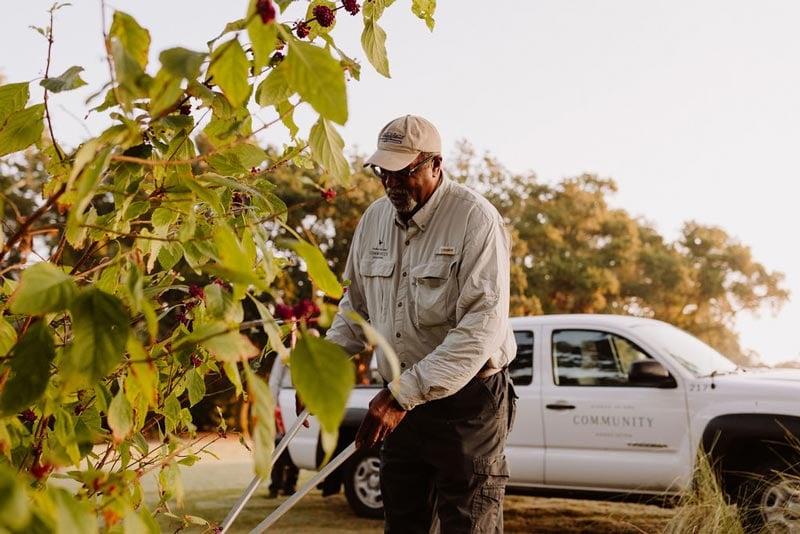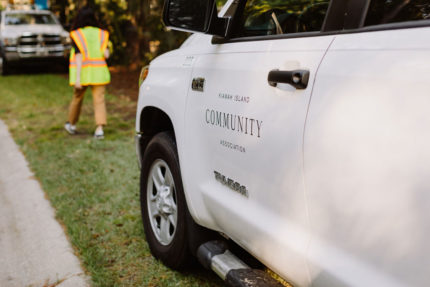Dec
01
2017
From The Blog
The Sandcastle, A History: Part 2 – Improving and Upgrading
The Sandcastle is currently closed for major renovations. Since it opened in 1996, it has needed numerous modifications, most described by administrators as “bandaids.” Last month Digest reported the story of how the Sandcastle came to be and the triumphs and challenges of the first few years. The story continues this month, from 2000 to the present.
The first improvements of the 21st century were to the pool. By 1999, the Recreation Center pool was nearly 25 years old and deteriorated, even though it had been refurbished in 1993. (Sometime in its first 10 years, the Recreation Center became known only by its nickname, the Sandcastle, but in 1999, it was still officially the Property Owners’ Recreation Center). The KICA board asked the Recreation Center Operating Committee (RCOC) to investigate repair and replacement alternatives. Assisted by design professionals the RCOC recommended replacing the pool and upgrading the other outdoor facilities.
Based on the RCOC report, the board decided to construct a new complex with a 25-meter pool, pool decking, pump house and children’s pool, at an estimated cost of $500,000 – $600,000, in addition to upgrading the bathhouse facilities, which were already scheduled as regular maintenance. The board also decided to hold a referendum for approval of a new children’s playground, a pavilion, wood decks and arbors, and a new beach boardwalk with an observation and seating area, at a cost of $300,000. Funds for both projects would come from the Recreation Center’s dedicated Major Repairs Fund plus a loan from KICA’s general Major Repair and Replacement fund.
The board presented the plan to members at the 1999 annual meeting, along with additional financial strategies “to strengthen the Recreation Center’s financial position,” that included increased guest and class fees and adding a small non-resident (part-time owner) user fee; a resident user fee was already in place. To sweeten the package, the board proposed a covenant amendment to reduce the Recreation Center amenity assessment (a part of the annual KICA assessment) from a maximum increase of 10%, to 5% annually.
The referendum passed with 80% of members voting in favor; the separate covenant amendment also passed. The existing pool was quickly bulldozed and, by Memorial Day 2000, members had a new pool complex with a pool that, according to a Digest article at the time, was 30% larger with a “much larger area and an acrylic ‘cool deck’ coating, as well as 2,000 square feet of covered pavilion, a tree-shaded playground and baby pool, completely renovated restrooms, and a new boardwalk to the beach with a deck overlooking the ocean.” It was intended to have a club-like feel and was described as “the finest facility of its kind…[on] the east coast.”
Part-time resident Susan Lorch remembers both pool complexes. She began vacationing on Kiawah during her college years and later she suggested to her dad that they build a house together, which they did in 1997. She had five children in six years, so, “I wasn’t in the big pool much before they redid it. We would use the outdoor bathroom and walk down the boardwalk to the beach. There were no decks.” She remembers the “paper tickets” that were membership cards, the vending machines for drinks and the ice cream snacks at the snack bar, and the playground which consisted of “three little metal things: a duck, a dolphin and one other.“ She also fondly remembers the lifeguards who taught all of her children to swim.
The new pool became a social gathering area for families. The children made lasting friends there and it was a popular enough gathering place that some children of Club members preferred the social scene at the Sandcastle to the Beach Club pool. “It was my kids’ first choice of a place to go. We would arrive and they would immediately head down to the Sandcastle,” Susan said. “They would go for the day, go back and forth from pool to beach to pool, have lunch there, do crafts on the picnic tables in the area that is now the bar, build sandcastles, play ping pong,” Susan said. “It was their second home. At night we would gather there with friends and have Lowcountry boils using the picnic tables. The kids liked to line up on the wall facing the parking lot and spit watermelon seeds. Their only bad memories are of the squirrels eating their food. They quickly learned to keep the food secured.”
Susan credits the new big pool with hastening her younger children’s potty training. “It was a new rule that you had to be potty trained to go in the big pool. My son got potty trained at the beach house just so he could go in the big pool.” Her daughter did the same. Susan’s mother, Martha Cavanaugh remembered, “The lifeguards would clap and cheer when, at the beginning of the summer, another little one would jump into the big pool, indicating he was potty trained.”
The pool area had several enhancements attractive to the children. The new showers were particularly popular on cold days. “When we couldn’t find them, we would look in the bathrooms and there they were taking showers forever.” The new playground was a hit but it also had its dangers. “The slide was a tunnel. The children would all climb on the top of the slide together. Then they decided to put water on the slide. A couple of the kids flew down and someone broke an arm,” Susan recounted.
There was some illicit after-hours activity. “After the lifeguards went home, the kids would pull the lifeguard stand to edge of the pool so they could dive off it,” Susan recalled. The pool had lights but they were not turned on. “My husband figured out how to turn them on. The kids loved to swim in the dark with the lights, before the security guards came at 9 p.m. to be sure everyone was out.”
Meanwhile, several years after the modifications made related to fitness and food during the Sandcastle building’s first five years (see the first part of this article in the November, 2017 Digest), the building needed additional improvements. Kay Narmour, now KICA Recreation Director, recalled, “Everything came through the front door – palm trees, party rentals, people. The foyer was hardwood, and twice a rental company had to refinish the floor because they had scratched it so badly. Members damaged it, too. Sand is so bad on hardwood.”
The 2005 renovation project improved the lobby and added a service elevator so that caterers would not have to come through the front door.“For the first time, members had a real entrance,” Kay said. The library and hallway got a hardwood floor. Upstairs improvements were made to the too-big kitchen and access to the third room.
2007 brought more changes to the fitness and pool area food operations. “The snack bar wasn’t vented, so we couldn’t offer the hamburgers, hot dogs and french fries that everyone wanted. It wasn’t a real snackbar,” Kay said. Dissatisfied with the “grumpy” lack of customer service, Kay had previously replaced the food providers with independent contractors, and in 2006 had even tried some vending machines; “They were not popular,” she noted. She wanted a real poolside grill.
The 2007 project added the grill and remodeled the entire first floor, creating the current lobby and two fitness rooms, one for equipment and one for classes. The second floor remained open during construction; the downstairs offices were relocated upstairs and the resort provided fitness space at the Straw Market. Lost to the renovation was a lovely mural that decorated the aerobics room, which Artist Guild president Kathleen Kreuzeberger had painted.
Except for the conversion of the pool pavilion to a bar overlooking the parking lot in 2015, the last 10 years have seen only maintenance projects at the Sandcastle. After 20 years, the Sandcastle is not the showpiece it once was. The second floor has remained a popular event location, but has often been inadequate for the growing number of clubs and classes. Kay has heard frequent complaints about the lack of fitness space and noted, “The dated style and décor are not up to Kiawah standards, and there is no view of the ocean from anywhere but the upstairs meeting rooms.” She has also had complaints from adults who do not like being in the middle of children’s games and balls at the pool.
Terri Weaver, a regular fitness center user for nearly 10 years, noted that fitness class attendance “has gone up dramatically.” Part of that started when class fees were eliminated. “We went to the Sandcastle Committee and said that member health is really important and more people would come to classes if they didn’t have to pay every time.” She wishes there were space for real locker rooms with lockers, better shower facilities, and some privacy.
KICA COO Jimmy Bailey commented on the need for the current project. “The building has adapted to a number of uses beyond its original purpose. Much about it is makeshift. Because of the various Band-Aids over the years, we wound up with building storage occupying the ocean front space on the first floor. We stuck the Sandbar in the only spot we could find.”
“We are investing significantly in soundproofing the group fitness room, which will improve the noise problems when an event in the ballroom is at the same time as an exercise class. We have incorporated a bar as a critical feature, which will have an ocean view and set up as a professional bar is. We will open up ocean views from the first floor. We are adding an adult pool overlooking the ocean. We are also benefiting from the purchase of the old Town Hall, now called Beachwalker Center, moving some small group activities there.”
Funding for the improvements will not affect annual assessments; in fact, the board has voted not to increase assessments this year. Most funding will come from a combination of funds from the Comcast revenue sharing agreement, which is over $200,000 annually, and the operating funds surplus which has accumulated over the last few years.
The Sandcastle closed its doors on Oct. 25 and is anticipated to reopen by July 3, 2018. Watch for progress reports in Digest.
Article contributed by Digest Feature Reporter Sue Schaffer.

